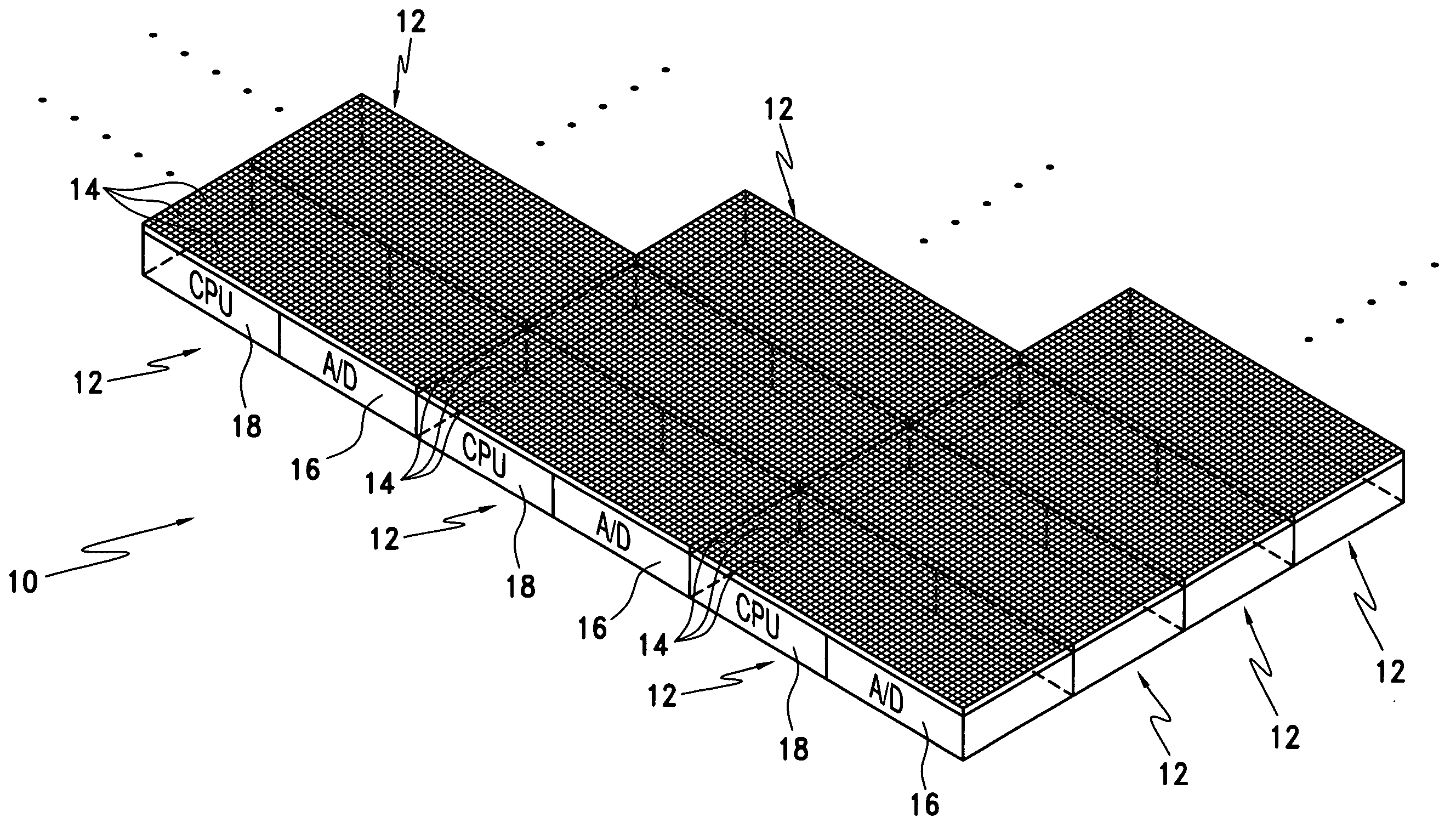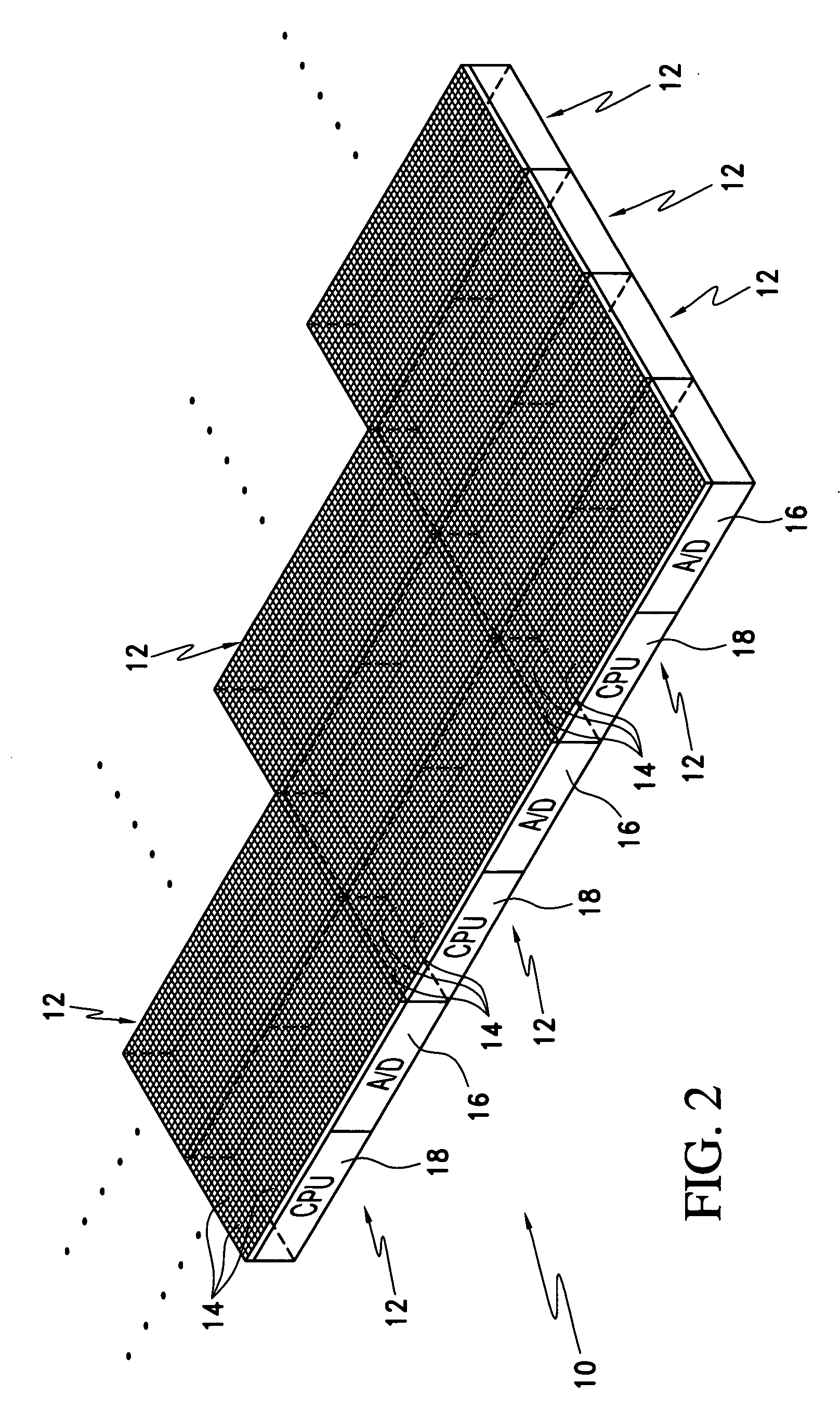High dynamic range sensor system and method
- Summary
- Abstract
- Description
- Claims
- Application Information
AI Technical Summary
Benefits of technology
Problems solved by technology
Method used
Image
Examples
Embodiment Construction
[0024]Referring now to FIG. 2, a schematic representation of a high dynamic range sensor assembly of the present invention is illustrated, designated generally as 10. The high dynamic range sensor assembly 10 comprises multiple pixel sets (i.e. “sensing sets” or “clusters”), each designated generally as 12 that are organized into a sensing array. Each pixel set includes a set of sensing elements 14 for sensing physical phenomena. The set of sensing elements 14 have a locally selectable integration time. An analog-to-digital (A / D) converter 16 is operatively connected to the set of sensing elements 14 for acquisition and conversion of an analog signal of each of the sensing elements 14 into a digital signal. A processor 18 is operatively connected to the A / D converter 16 and to the set of sensing elements 14 for managing the selectable integration time for the set of sensing elements 14 and for analyzing the digital signals from each of the sensing elements 14 in the set of sensing e...
PUM
 Login to View More
Login to View More Abstract
Description
Claims
Application Information
 Login to View More
Login to View More - R&D
- Intellectual Property
- Life Sciences
- Materials
- Tech Scout
- Unparalleled Data Quality
- Higher Quality Content
- 60% Fewer Hallucinations
Browse by: Latest US Patents, China's latest patents, Technical Efficacy Thesaurus, Application Domain, Technology Topic, Popular Technical Reports.
© 2025 PatSnap. All rights reserved.Legal|Privacy policy|Modern Slavery Act Transparency Statement|Sitemap|About US| Contact US: help@patsnap.com



